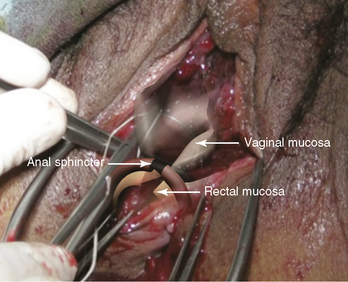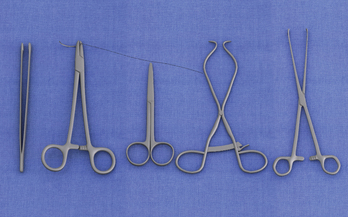Chapter 18 Third- and Fourth-Degree Laceration Repair
Common indications
Third- and fourth-degree perineal lacerations occur when the head of the infant applies excessive tension to the perineal body and the posterior fourchette during delivery. Episiotomies are rarely cut to the third degree, but the extension of second-degree episiotomies to third- or fourth-degree lacerations is relatively common. The third-degree laceration results in the tearing of the external and internal rectal sphincters, and the fourth-degree tear involves the rectal mucosa (Figure 18-1).
Equipment
A standard delivery set with a Russian forceps, needle driver, a Gelpi retractor, and Alice clamps is ideal for this repair. Plan to repair the rectal mucosa with 4-O or 5-O chromic gut. The rectal fascia should be repaired with 3-O Vicryl or Dexon to provide tensile strength for at least 2 weeks. Repair the rectal sphincter with 2-O Vicryl or Dexon (Figure 18-2). The remaining final closure of the second-degree repair is reviewed in Chapter 15, which covers vaginal laceration and episiotomy repair.
Key steps
Fourth-Degree Repair
Stay updated, free articles. Join our Telegram channel

Full access? Get Clinical Tree




